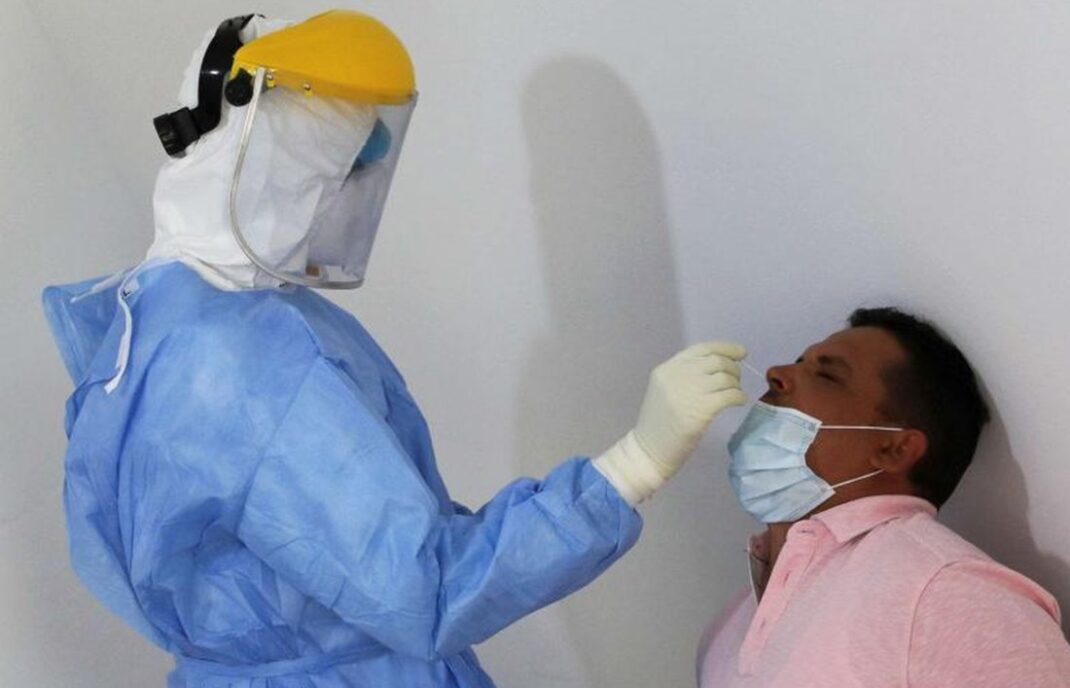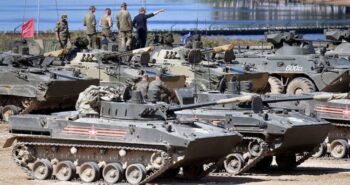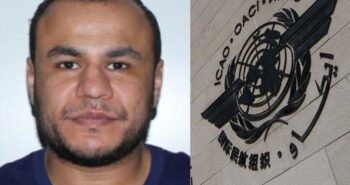By Anas El Gomati
 COVID-19 has changed the world and the way we live it, establishing something of a “new normal” as states and societies battle the pandemic and learn to accommodate its multidimensional effects. For Libyans’ living in the midst of conflict, normality and a new normal are difficult to determine.
COVID-19 has changed the world and the way we live it, establishing something of a “new normal” as states and societies battle the pandemic and learn to accommodate its multidimensional effects. For Libyans’ living in the midst of conflict, normality and a new normal are difficult to determine.
The economy, healthcare system and everyday lives of Libyans’ have been far from normal as a result of the 18-month conflict sparked by General Khalifa Haftar’s attempt to overthrow the UN-recognised Government of National Accord (GNA) in Tripoli.
However, the pandemic and its dynamism has had an impact far beyond the everyday lives of citizens. The lifecycle of the pandemic has had a major impact on the conflict itself. It first served to distract international powers from their diplomatic obligations and peace building in Libya, acting as a cover for local factions and their foreign sponsors to intensify the conflict during the initial global shockwave of the pandemic at the beginning of 2020.
Towards the end of 2020, however, the pandemic compounded socio-economic and political pressures in Libya, sparking national demonstrations and dissidence towards the rival factions, leading to political resignations and renewed diplomatic negotiations in the process.
When world leaders met in Berlin on 20 January 2020 to enforce an arms embargo and ceasefire to end the war in Libya, none of them realised they would be returning home to prepare for their own war against COVID-19.
The German government had successfully brokered a fragile ceasefire to be followed by further UN-mediated political talks aimed a unifying the rival parties in Geneva in March. The ceasefire collapsed and the diplomatic talks not only broke down, but led to the resignation of the UN Special Representative for Libya, Ghassan Salamé.
None of the governments who met in Geneva were there to pick up the pieces; world powers previously focused on peacebuilding efforts were now closely monitoring the pandemic’s grip on Italy, Spain and South Korea.
Consumed by the ensuing panic, global attention shifted away from the Geneva dialogue. Libya’s fragile ceasefire began to unravel and the conflict intensified as rival parties sought to exploit a window of opportunity to make military gains instead of political concessions.
Haftar’s self-styled Libyan Arab Armed Forces (LAAF) advance and siege of Tripoli entered a new brutal phase under cover of the pandemic. This period saw a surge in foreign military support and direct intervention from both the United Arab Emirates (UAE) and Russia to assist the LAAF in breaking the GNA’s resolve.
The UAE deployed drones and air defence systems, and hired Sudanese mercenaries, alongside Russia’s Syrian mercenaries and private military contractors from the infamous Wagner group.
Tripoli residents described the LAAF’s resumption of the conflict as the worst they had witnessed in the past three civil wars. Civilian neighbourhoods were shelled, killing and injuring civilians and displacing nearly 25,000 civilians in less than a month of renewed conflict.
In response, Turkey sent further Syrian mercenaries and military technicians of its own, and used its highly sophisticated drone technology to destroy nine sophisticated air defence systems supplied to the LAAF by its foreign sponsors. Foreign powers took discrete control of the levers of the conflict.
Turkey signed a maritime and military memorandum of understanding with the GNA in November 2019, which was able to assist the GNA in forcing an end to Haftar’s assault on Tripoli in May 2020 and push the UAE and Russia back to the central city of Sirte, dividing west from east Libya. An uneasy military stalemate between the rival factions has ensued since June 2020.
Libya’s (and importantly, Libyans’) experience of the pandemic is perhaps the most unusual in the region. The country’s capacity to respond has been weakened by years of conflict and destruction, but also as a result of Libya’s institutional divisions.
There is no single unified authority accounting for COVID-19 contagion numbers in Libya, with two rival governments reporting on these figures: the UN-recognised GNA in Tripoli established in December 2015 and its rival, the rump interim government in Bayda, eastern Libya, which is supported by the LAAF.
These institutional divisions, across a vast territory, and the inability to resume regular intergovernmental communication have hindered a truly coherent national response.
Nevertheless, in April, the GNA announced a 500 million Libyan dinar (310 million euro) package to combat the spread of the disease across the country, including territory controlled by the LAAF. This package has been supplemented by a further 20 million euro provided by the EU to improve detection and contact tracing measures. Meanwhile, the International Organization for Migration has ramped up its efforts to respond to the needs of displaced people and refugees considered to be the most vulnerable. Despite this package, the number of reported infections per day began doubling around June 2020.
According to the Libyan National Centre Disease Control (NCDC), as of October 2020 Libya has a reported total of over 50,000 cases, with almost a thousand cases per day. It is likely that these numbers are significantly understated, not least because of the difficulty for the NCDC to co-ordinate and collect data across a divided country with restricted access to testing.
An independent in-depth survey of Libya’s healthcare system in March 2020 had shown Libya’s lack of preparation for a pandemic. The average hospital had 200 beds, but only nine lifesaving intensive care unit facilities and mechanical ventilators needed for severe cases of infection. Some facilities had no nurses whatsoever, and 70 per cent of doctors surveyed claimed they had to purchase their own personal protective equipment.
Inadequate resources and preparation for infectious diseases can be traced to decades of administrative neglect of Libya’s public health system under the former Ghaddafi regime. However, Libya’s current public health crisis is exacerbated by the damage caused through civil war, that the GNA’s COVID-19 recovery package does not address and cannot hope to resolve.
Libya’s two urban-centred civil wars fought in Benghazi between 2014 and 2017 and the LAAF’s military campaign on Tripoli since 2019 deliberately targeted and destroyed much of Libya’s public health infrastructure and overwhelmed its personnel.
Since the beginning of the Tripoli campaign, the LAAF has launched airstrikes on the capital’s hospitals, killing doctors and paramedics and destroying ambulances. Al Khadra, Tripoli’s 400-bed hospital and main designated COVID-19 response centre, was shelled by the LAAF three times in five days in early April.
During the last months of the conflict, and Libya’s first months of lockdown, water supplies to the homes of three million people in the capital region Tripolitania were forcibly shut off by forces affiliated to the LAAF, in what can be considered a war crime.
Libya’s economy and society have been ravaged by the ongoing conflict. Hundreds of thousands of displaced persons have returned to homes utterly or partially destroyed in the latest round of conflict.
The private sector has barely survived; many businesses have been destroyed by years of conflict or recent COVID lockdowns, hurting local economic activity and limiting the circulation of financial liquidity to a private sector starved of cash from years of banking crisis.
This has limited the purchasing power needed to prepare supplies for the pandemic. Acute water shortages as a result of conflict, corruption and sabotage have reduced Libya’s supply of water by 30 per cent during the pandemic when it is most needed, and there is a nation-wide shortage of cooking gas.
Fuel shortages limit mobility, in a country with the largest proven oil reserves in Africa. However, it is the ongoing nation-wide electricity outages that have made living conditions unbearable, resulting in life in Libya being described as “apocalyptic” by the Danish Refugee Council.
This perfect storm of years socio-economic deterioration and unbearable living conditions accentuated by the pandemic has sparked a spontaneous uncoordinated nation-wide protest movement across Libya since August.
Libyans across the institutional, political and geographical divide have started to voice their dissidence against unacceptable living conditions exacerbated by the pandemic as a result of years of institutional corruption and neglect.
This wave of social pressure represents a serious test of the political resilience of the rival GNA and LAAF, and a new measure of their ability to govern the country.
The GNA’s Minister of Interior Fathi Bashagha actually encouraged early protests in Tripoli during August, but over 20 protestors were detained, and at least one killed by GNA-affiliated armed groups that Bashagha has gone to war against.
GNA Prime Minister Fayez al-Sarraj temporarily suspended Bashagha as a result of what he believed was an attempt to undermine him, in an intra-GNA political feud. These multiple crises during widespread protests and political negotiations with the LAAF eventually led Sarraj to announce his resignation, effective at the end of October.
The social situation in Eastern Libya is similar, but the political response has been markedly different. LAAF Chief of Staff Abdelrazek al-Nadoori and head of the COVID-19 Committee announced in April that the LAAF would “pursue anyone, at home or abroad” who criticised the LAAF’s preparations for fighting the pandemic.
Nevertheless, like the GNA, the LAAF has been unable to stop demonstrators, some of which also set local government buildings on fire. The protests resulted in the resignation of the Prime Minister of the rump parallel government established by the Libyan House of Representatives administration, Abdullah al-Thani.
The resignation however is considered a hairline fracture given the LAAF’s control over daily life, its institutional role in managing the pandemic, and the refusal of HoR chief Aguila Saleh to step down after six years.
The economic and COVID-induced protests have sparked new life in Libya’s failed political talks, and Sarraj’s resignation has resulted in a political vacuum that both the GNA and LAAF are eager to fill.
This has resulted in a recent US-led uptake in diplomacy, and the rival factions have returned to the UN’s political, economic and military track to negotiate a ceasefire and a unified government, in meetings held in Morocco, Switzerland and Egypt since September.
The announcement of a UN brokered permanent ceasefire in Geneva on 23 October and political talks scheduled for November have set the local factions, and international community on course for a new chapter in Libya’s transition.
As infection numbers rise across Europe and the West experiences a second wave of COVID-19, the pandemic looms over Libya’s negotiations once again, though it is difficult to determine whether it will have the same shock value and impact as it did in its first wave.
As cases rise in Libya, the capacity of the virus to ravage the population irrespective of political factions should offer urgency to Libya’s parties to resolve their differences. Libya faces an uphill battle with the pandemic, with signs showing it will get worse before it gets any better.
Only time will tell if the present, second wave of the pandemic can help induce local peace-making or whether it will once again provide a cover for local and international spoilers to break Libya’s fragile peace in pursuit of their own narrow objectives.
***
Anas El Gomati is the founder of the Tripoli-based Sadeq Institute, the first Libyan think tank, and a visiting lecturer at the NATO Defense College in Rome, where his work focuses on political analysis and public policy. He was a visiting fellow at the Carnegie Middle East Center, where his research focuses on socioeconomics, democratic governance, the security sector, and political Islam in Libya.
***
Sadeq Institute is Libya’s first independent public policy think tank and research centre established in 2011. Based in Tripoli, Libya, Sadeq institute produces original research, publishes insightful analysis and convenes events on strategic issues in Libya.
___________





